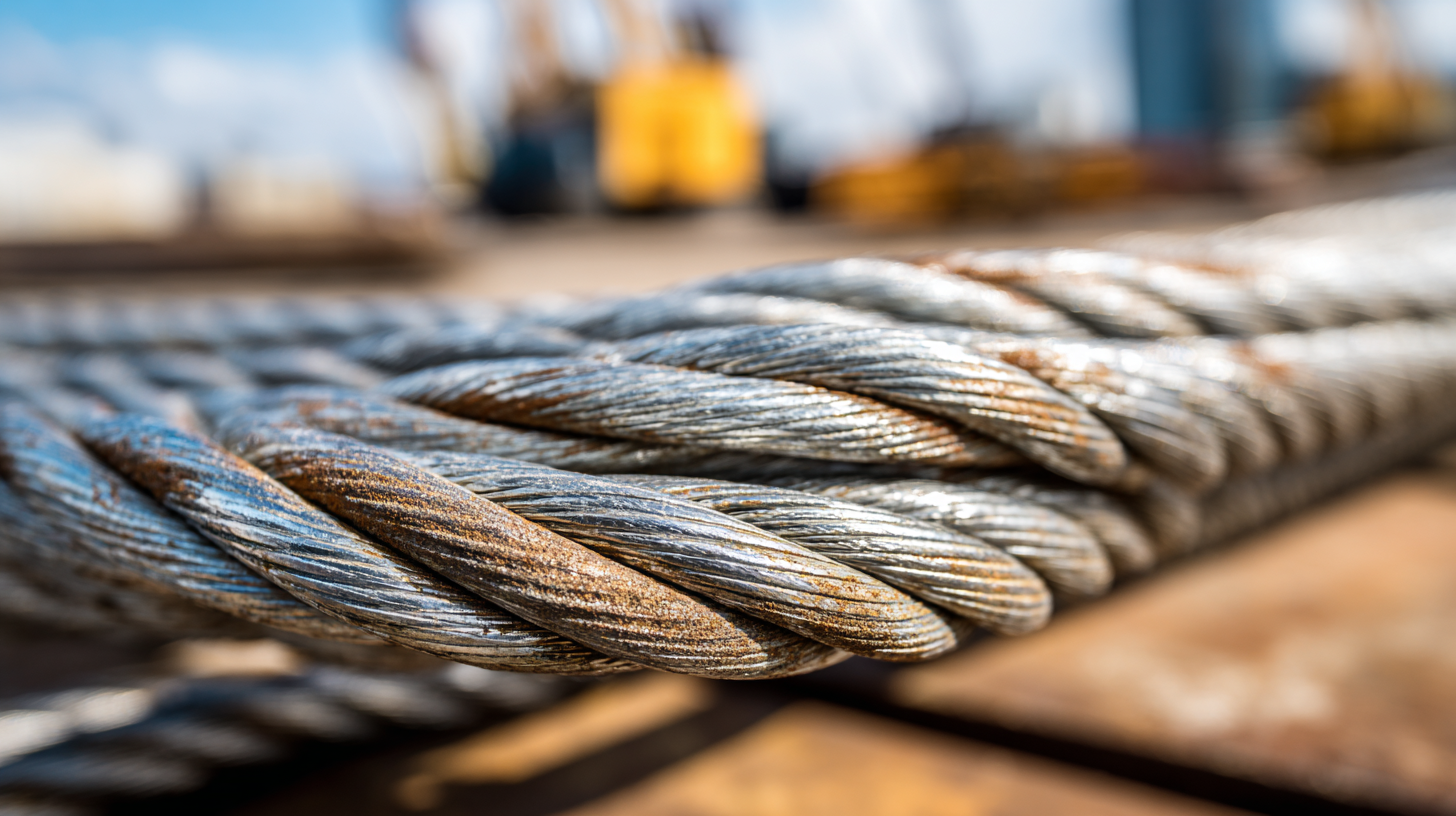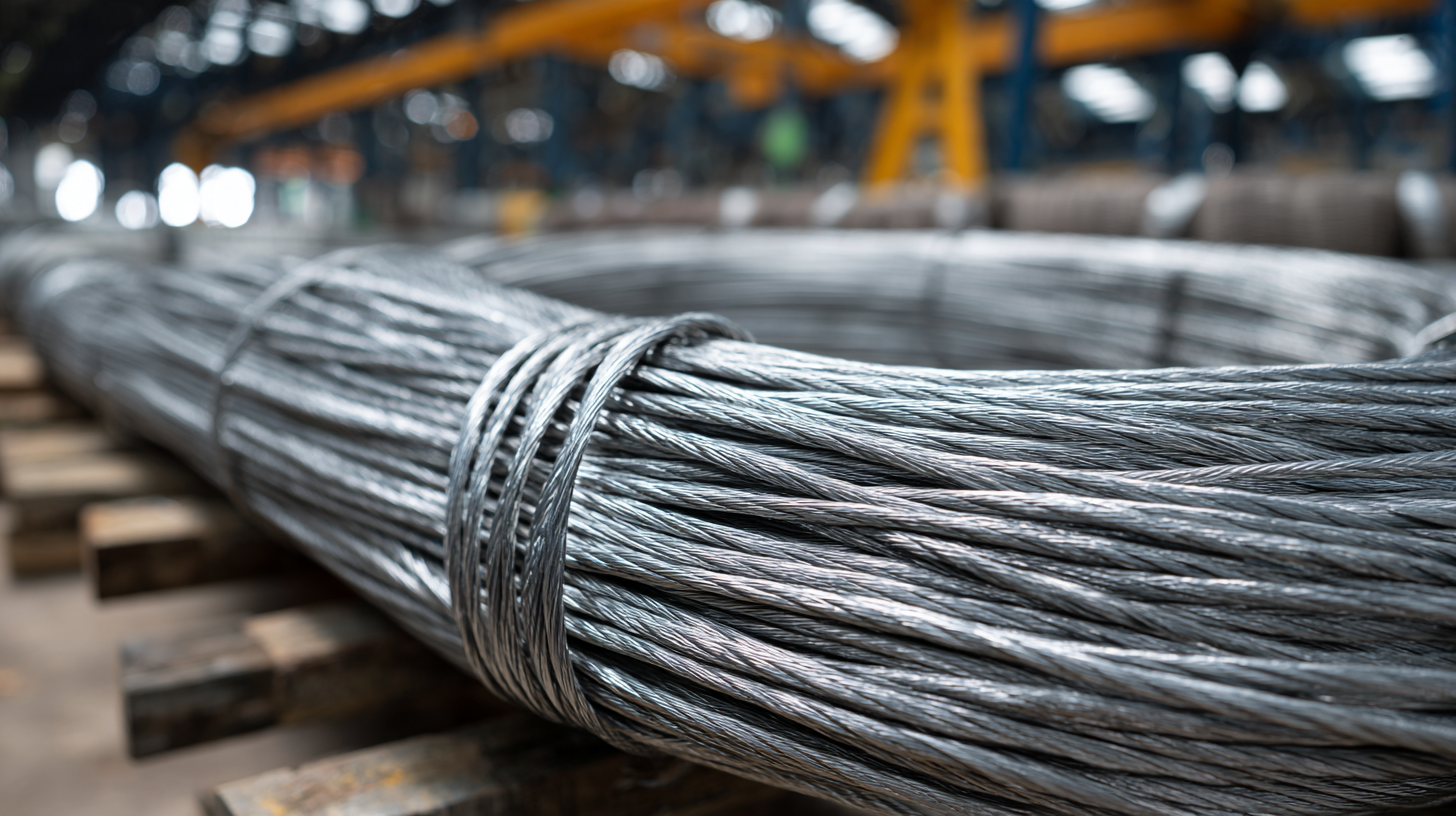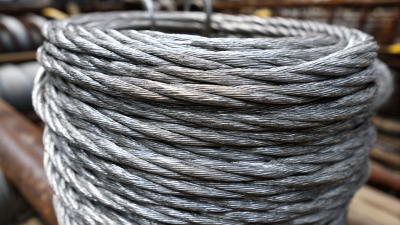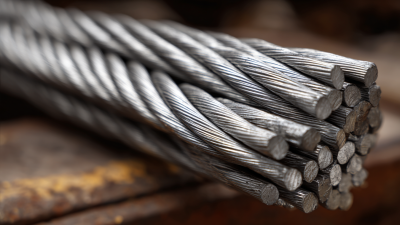
-
Home
-
Products
-
PVC Cable Material
-
Low Smoke Zero Halogen Cable Material
-
Cable material
-
Optical fiber cable
-
-
About Us
-
VR
-
News
-
Blog
-
Contact Us
Leave Your Message

In modern construction, the use of Galvanized Steel Wire Strand has become increasingly prevalent due to its superior strength, durability, and resistance to corrosion. According to the International Organization for Standardization (ISO), the construction industry is expected to grow at a rate of 5.4% per annum, leading to an increasing demand for materials that can withstand various environmental conditions. With its ability to extend the lifespan of structures, Galvanized Steel Wire Strand not only enhances safety but also reduces maintenance costs, making it a strategic choice for builders and architects.

A report by MarketsandMarkets forecasts that the global galvanized steel market will reach $185.5 billion by 2026, underscoring the growing recognition of its benefits. This guide delves into the applications and advantages of Galvanized Steel Wire Strand, equipping professionals with essential insights to leverage this innovative material in their projects.
 Galvanized steel wire strand is an essential material in modern construction, renowned for its robustness and versatility. Composed of high-quality carbon steel, the wire is coated with zinc to enhance its resistance to corrosion, making it ideal for harsh environmental conditions. According to a report by the American Steel Wire Institute, galvanized steel wire exhibits a significant increase in durability, with usability extending beyond 30 years when properly maintained. This enhanced lifespan makes it a preferred choice for applications ranging from cable stays for bridges to reinforcing wire mesh in concrete structures.
Galvanized steel wire strand is an essential material in modern construction, renowned for its robustness and versatility. Composed of high-quality carbon steel, the wire is coated with zinc to enhance its resistance to corrosion, making it ideal for harsh environmental conditions. According to a report by the American Steel Wire Institute, galvanized steel wire exhibits a significant increase in durability, with usability extending beyond 30 years when properly maintained. This enhanced lifespan makes it a preferred choice for applications ranging from cable stays for bridges to reinforcing wire mesh in concrete structures.
The properties of galvanized steel wire strand further contribute to its popularity in the construction industry. The wire's tensile strength, often exceeding 1,200 MPa, allows it to bear substantial loads, ensuring safety and reliability in structural applications. Additionally, the coating of zinc not only provides a protective barrier but also contributes to the wire's ductility, allowing it to be bent and forged into various shapes without compromising its integrity. Studies by the International Zinc Association indicate that incorporating galvanized steel in construction can lead to a 25% reduction in maintenance costs over the lifecycle of a project, underscoring its economic advantages for modern builders.
Galvanized steel wire strand has become an essential material in modern construction, thanks to its durability and corrosion resistance. One of the key applications is in the construction of bridges, where the strands are used as tension cables. Their strength allows for the support of heavy loads while maintaining structural integrity over long spans. This application not only enhances safety but also extends the lifespan of the infrastructure, making it a cost-effective solution over time.
Another important use of galvanized steel wire strand is in the fencing industry. These strands provide robust barriers for agricultural, industrial, and residential purposes. Their resistance to rust ensures that fences maintain their strength and appearance, even when exposed to harsh environmental conditions. Additionally, the flexibility of the wire allows for easy installation and adaptability to various configurations, making it a preferred choice for property demarcation and security solutions in modern construction.
 Galvanized steel wire strand has increasingly become a preferred choice in modern construction due to its unique properties and advantages over alternative materials. One of the primary benefits is its superior resistance to corrosion. According to a report by the American Galvanizers Association, galvanized steel can last up to 30 years or more when exposed to harsh environmental conditions. This longevity reduces the need for frequent replacements, ultimately resulting in lower maintenance costs and enhanced structural integrity over time.
Galvanized steel wire strand has increasingly become a preferred choice in modern construction due to its unique properties and advantages over alternative materials. One of the primary benefits is its superior resistance to corrosion. According to a report by the American Galvanizers Association, galvanized steel can last up to 30 years or more when exposed to harsh environmental conditions. This longevity reduces the need for frequent replacements, ultimately resulting in lower maintenance costs and enhanced structural integrity over time.
Tips: When selecting materials for a construction project, consider the long-term cost-effectiveness of galvanized steel wire strand. While initial investments may be comparable to other materials, the reduced maintenance and replacement costs can lead to significant savings in the lifecycle of the project.
Another major advantage of galvanized steel wire strand is its high tensile strength. According to industry standards, galvanized strands have a tensile strength of approximately 1,400 to 2,500 MPa, making them suitable for high-load applications such as bridges and high-rise buildings. This property allows for greater flexibility in design, enabling engineers to create innovative structures that can withstand substantial forces and adverse conditions.
Tips: Always consult engineering specifications and industry standards to ensure that the selected galvanized steel wire strand meets the required performance criteria for your specific project needs.
When selecting galvanized steel wire strand for construction projects, there are several critical factors to consider. One of the primary considerations is the corrosion resistance of the wire strand. According to a report by the American Galvanizers Association, galvanized steel can have a lifespan that is up to four times longer than uncoated steel when exposed to harsh environmental conditions. This makes it particularly suitable for applications such as bridges, towers, and coastal structures where exposure to moisture and salt is prevalent.
Another key factor is the tensile strength of the galvanized wire. The wire’s strength affects its load-bearing capacity and overall structural integrity. Industry standards, such as ASTM A475, outline minimum tensile strength requirements for different gauges of steel wire, ensuring that projects can withstand anticipated stresses. Furthermore, the diameter of the strand is crucial; thicker strands provide higher strength but may also be heavier and require more robust installation techniques. A balance must be achieved between strength, weight, and application-specific requirements to ensure optimal performance in construction projects.
Galvanized steel wire strand is increasingly favored in modern construction due to its exceptional durability and resistance to environmental factors. One of the primary maintenance considerations for galvanized steel is regular inspection for signs of wear or rust, particularly in coastal or industrial areas where exposure to salt and chemicals may accelerate corrosion. Protective coatings can be reapplied as needed to maintain the strand's integrity, ensuring that it continues to perform effectively throughout its lifespan.
Another crucial aspect of ensuring the longevity of galvanized steel wire strand is proper installation. Following industry best practices during installation can significantly reduce the likelihood of damage that may compromise the wire’s durability. Additionally, maintaining an appropriate tension during use can prevent fatigue and potential failure of the strands under load. By understanding both maintenance practices and installation techniques, builders can enhance the lifespan of galvanized steel wire strand, making it a reliable choice for various applications in construction.





